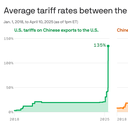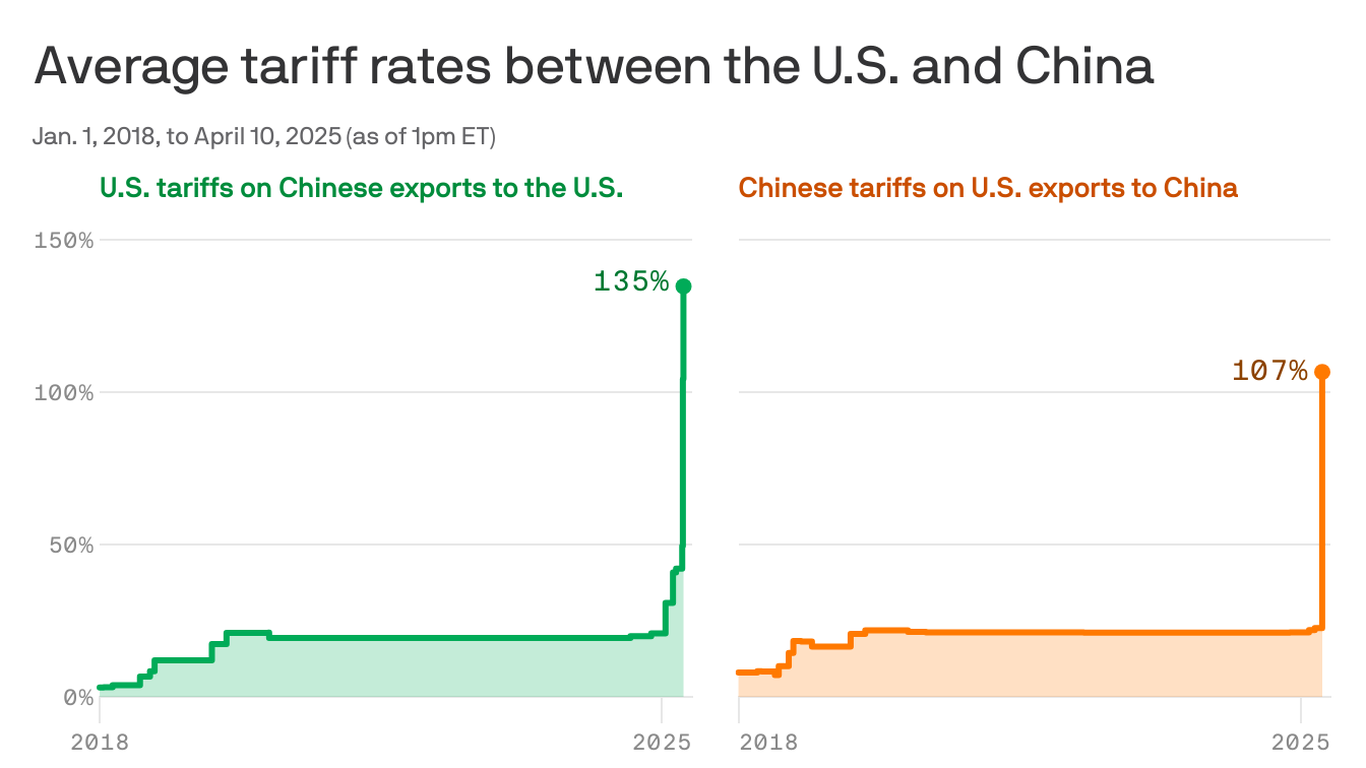Want to buy a Chinese EV? Get ready to pay a 250% tariff.
VCG/VCG via Getty Images
- Trump and China are locked in a trade war, and for some products, the situation is getting out of hand.
- Thanks to the US and China's tariff tit-for-tat, EVs from China now face a 247.5% tariff rate.
- So don't expect to see cars from Tesla rivals BYD or Xiaomi on the road anytime soon.
It was already nearly impossible to buy a BYD in the US, but now things are getting somewhat out of hand.
After a rapid escalation in the trade war between the US and China over the past few days, anyone trying to import a Chinese electric car to the US faces a tariff rate of 247.5% — so don't expect to see any cars from Tesla rivals BYD or Xiaomi on the road anytime soon.
A spokesperson for the US International Trade Commission confirmed the total tax rate to Business Insider on Thursday.
That includes the 145% tariffs on Chinese goods announced by Donald Trump in recent days and the 100% levy on Chinese electric cars implemented by Joe Biden last year, plus a 2.5% duty rate on all EVs bought into the US for good measure.
The enormous number is a sign of how the trade war between the world's two largest economies has escalated to almost ludicrous levels. China retaliated against the latest US tariffs on Friday with its own 125% tariff on US goods.
It also shows how far successive US administrations have gone to prevent a wave of affordable, high-tech Chinese electric vehicles from reaching American shores.
According to classic car importer CFR Classic, the cost of importing a car from China to the US starts from $2,749. This means that anyone trying to import a Chinese EV would face extra shipping costs of at least $6,800.
That's not far off the cost of the $7,800 Seagull, BYD's cheapest electric car — and thanks to a host of additional regulations and restrictions, it is unlikely anyone would be able to legally drive one on US roads even if they could afford the shipping fees.
Chinese EVs pose an existential threat
Having once dismissed Chinese carmakers, the US auto industry has now decided BYD and its fellow upstarts represent an existential threat.
Elon Musk warned last year that China's EV companies would "demolish" their Western rivals without trade barriers. At the same time, Ford CEO Jim Farley was so impressed by Xiaomi's SU7 electric sedan that he flew one from Shanghai to Chicago.
The 250% trade barrier protects Tesla, Ford, and other automakers from having to compete with BYD and Xiaomi in the US, but it does little to protect them elsewhere.
Chip Somodevilla/Getty Images
Not content with crushing Western automakers at home, China's EV makers are now expanding rapidly in developing markets like Brazil and Southeast Asia.
They are also building factories and entering new markets in Europe, which is reportedly considering removing its own tariffs on Chinese electric cars after getting dragged into Trump's trade war.
Americans, who in surveys have consistently cited a lack of affordability and choice as major barriers to buying an EV, are starting to take notice.
YouTuber iShowSpeed, real name Darren Watkins Jr., showed off some of BYD's most eye-catching cars to his 38.6 million subscribers during a recent visit to China.
In a livestream with around 8 million views on YouTube, the streamer drove BYD's Yangwang U8 SUV, which can float on water for up to 30 minutes, and the U9, a $233,000 electric supercar with remote-controlled suspension that allows it to "dance" and jump over obstacles.
When he attempted to buy the U9 to take back to the US, however, the influencer was told it wasn't possible.
For many US drivers who want to see the Seagull or SU7 in action, high tariffs mean YouTube is their only option. Or they can just cross the border to Mexico, where Chinese EVs are rapidly becoming a common sight on local roads.

